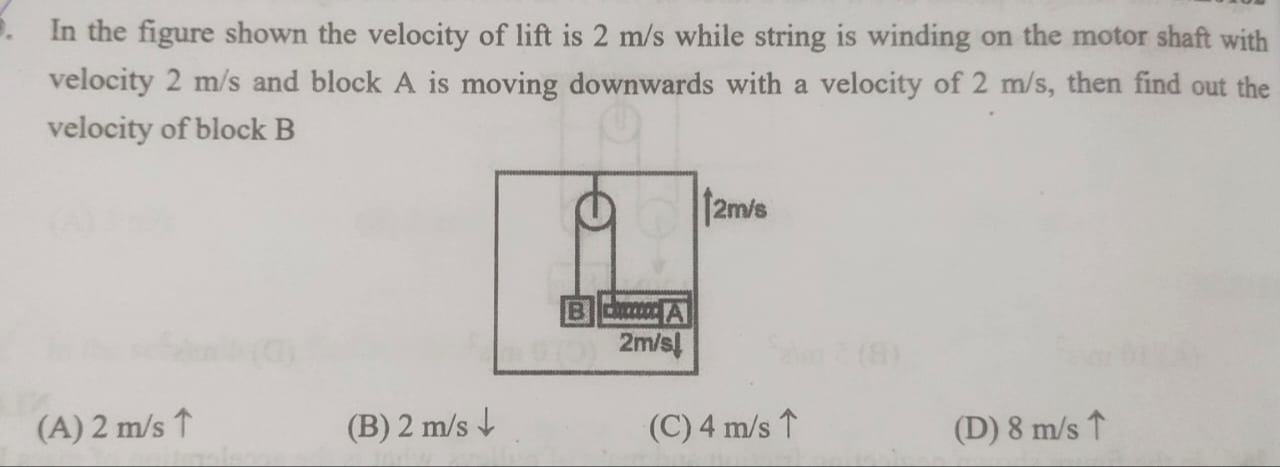Question
Question: In the figure shown the velocity of lift is 2 m/s while string is winding on the motor shaft with ve...
In the figure shown the velocity of lift is 2 m/s while string is winding on the motor shaft with velocity 2 m/s and block A is moving downwards with a velocity of 2 m/s, then find out the velocity of block B

2 m/s ↑
2 m/s↓
4 m/s ↑
8 m/s ↑
8 m/s ↑
Solution
To determine the velocity of block B, we will use the concept of relative velocities and the constraint equation for the string-pulley system.
Let's define our coordinate system: Upwards is positive (+), and downwards is negative (-).
Given information:
- Velocity of the lift (VL): 2 m/s upwards. So, VL=+2 m/s.
- Velocity of the pulley (VP): Since the pulley is fixed to the lift, its velocity is the same as the lift's velocity. So, VP=VL=+2 m/s.
- Velocity of block A (VA): 2 m/s downwards. So, VA=−2 m/s.
- String winding on motor shaft: The string is winding on the motor shaft with a velocity of 2 m/s. This means the total active length of the string (the part of the string that is free to move over the pulley and connected to the blocks) is decreasing at a rate of 2 m/s. Let this rate of change of active string length be dLactive/dt. Since the length is decreasing, dLactive/dt=−2 m/s.
Consider the active length of the string. Let yP be the position of the pulley, yA be the position of block A, and yB be the position of block B, all measured from a fixed ground reference. The length of the string segment from the pulley to block A is (yP−yA). The length of the string segment from the pulley to block B is (yP−yB). The total active length of the string, Lactive, is the sum of these two segments: Lactive=(yP−yA)+(yP−yB) Lactive=2yP−yA−yB
Now, we differentiate this equation with respect to time to find the relationship between the velocities: dtdLactive=dtd(2yP−yA−yB) dtdLactive=2dtdyP−dtdyA−dtdyB Substituting the velocities (V=dy/dt): dtdLactive=2VP−VA−VB
Now, substitute the known values into this equation: −2 m/s=2(+2 m/s)−(−2 m/s)−VB −2=4+2−VB −2=6−VB
Now, solve for VB: VB=6+2 VB=8 m/s
Since the value of VB is positive, block B is moving upwards. Therefore, the velocity of block B is 8 m/s upwards.
